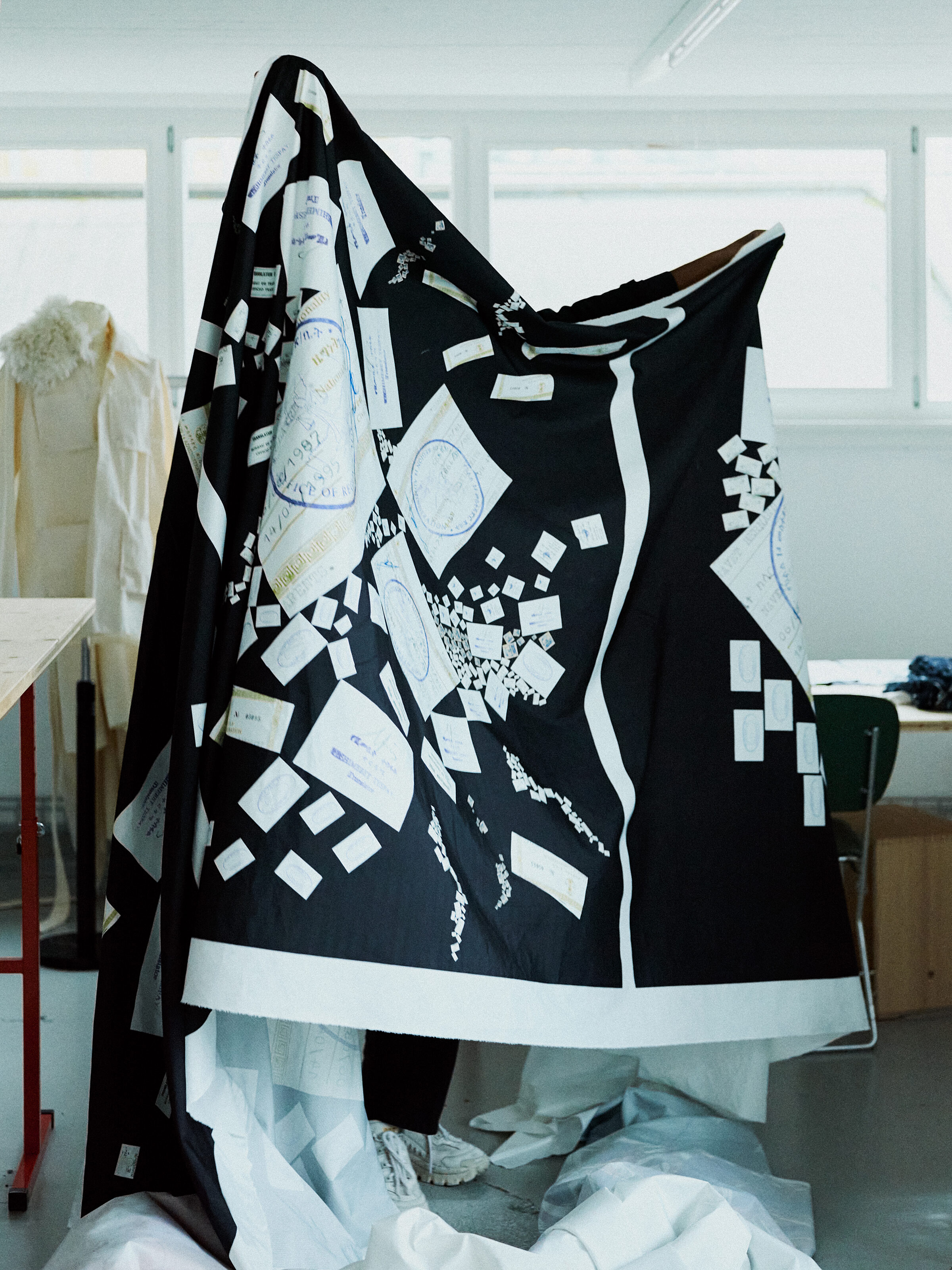Benjamin Mengistu Navet
Off the Grid
Periode: 01.06—17.09.2023
ENG
Benjamin Mengistu Navet (°1994) was born in Addis-Abeba, Ethiopia and grew up in France. Navet arrived in Belgium to study Fashion Design at La Cambre (Brussels) and Textile Design at KASK School of Arts (Ghent). Navigating between different approaches of textiles and fashion, he passed by Margiela’s knitwear studio in Paris, and was later selected for the TaDA residency in Switzerland, where he was working closely with textiles industries in order to develop new projects. Afterwards, he returned to Belgium to work on several projects between Brussels and Flanders as well as exhibitions with Komplot, The Constant Now, and Ballon Rouge Gallery (invited by Please Add Color). He has collaborated with choreographer Stanley Ollivier and most recently with Swiss artist Axelle Stiefel for vorstellen.network on a specific project for the Sculpture Garden Biennale Geneva.
NL
Benjamin Mengistu Navet (°1994) is geboren in Addis-Abeba, Ethiopië en groeide op in Frankrijk. Navet kwam naar België om Fashion Design te studeren aan La Cambre (Brussel) en Textile Design aan KASK School of Arts (Gent). Hij navigeerde tussen verschillende benaderingen van textiel en mode en kwam langs Margiela’s brei-atelier in Parijs. Later werd hij geselecteerd voor de TaDA residentie in Zwitserland, waar hij nauw samenwerkte met textielindustrieën om nieuwe projecten te ontwikkelen. Daarna keerde hij terug naar België om te werken aan verschillende projecten tussen Brussel en Vlaanderen en tentoonstellingen met Komplot, The Constant Now en Ballon Rouge Gallery (op uitnodiging van Please Add Color). Hij werkte samen met choreograaf Stanley Ollivier en recentelijk ook met de Zwitserse kunstenares Axelle Stiefel voor vorstellen.network aan een specifiek project voor de Beeldentuin Biënnale in Genève.
Website








Benjamin Mengistu Navet
ENG
The main focus of the weavings and practice of Benjamin Mengistu Navet is the creation of a dialogue between industry and craftsmanship, in order to question the production process of objects. Based on Navet’s research in post-colonial practices in the field of fashion and textiles, he currently investigates his own Ethiopian background through pattern-making by combining traditional with industrial techniques. He approaches his practice as a laboratory where textile and garments enter in a dialogue or confrontation with other media and images. Whether it is handwoven, or industrially printed, straight from the industrial weaving machine, or revealed by hand dyes, whether it’s for a scenography that reveals the colonial trajectory of a fabric, the Ahmaric alphabet, crossing personal trajectories from diasporas with textile techniques, these embodied narratives are at the center of his research-based practice.
NL
De belangrijkste focus van het weefwerk en de praktijk van Benjamin Mengistu Navet is het creëren van een dialoog tussen industrie en vakmanschap, om op die manier het productieproces van objecten in vraag te stellen. Op basis van Navet’s onderzoek naar postkoloniale praktijken op het gebied van mode en textiel, onderzoekt hij momenteel zijn eigen Ethiopische achtergrond door patronen te maken aan de hand van de combinatie van traditionele en industriële technieken. Hij benadert zijn praktijk als een laboratorium waar textiel en kleding een dialoog of confrontatie aangaan met andere media en beelden. Of het nu handgeweven is, industrieel bedrukt, rechtstreeks uit de industriële weefmachine, of onthuld door handverven, of het nu gaat om een scenografie die het koloniale traject van een stof onthult, het Ahmarese alfabet, het verweven van persoonlijke diasporaverhalen met textieltechnieken, deze belichaamde verhalen staan centraal in zijn onderzoeksgebaseerde praktijk.





